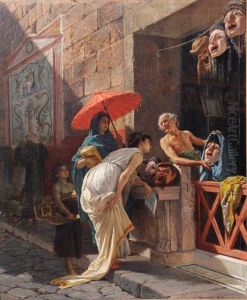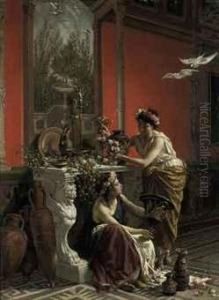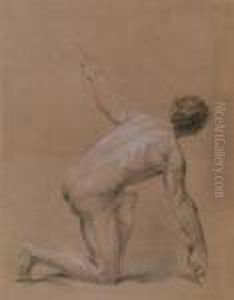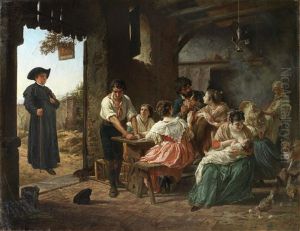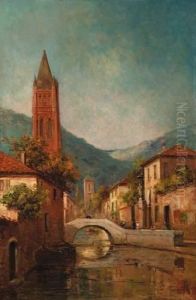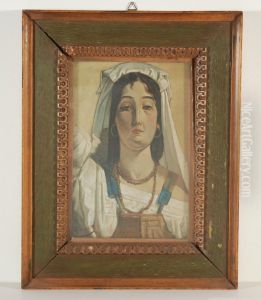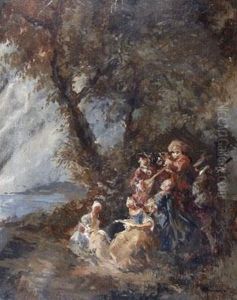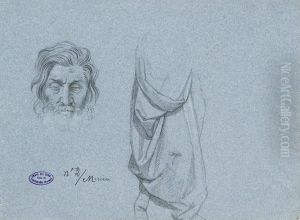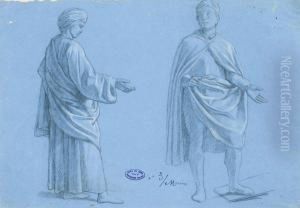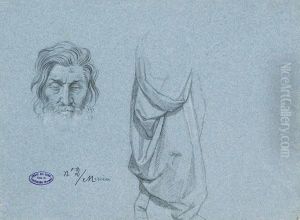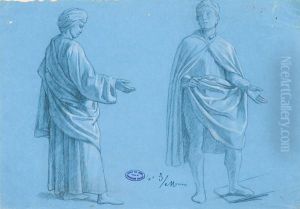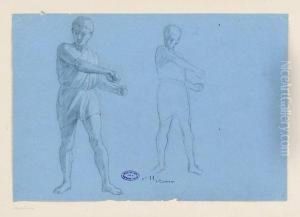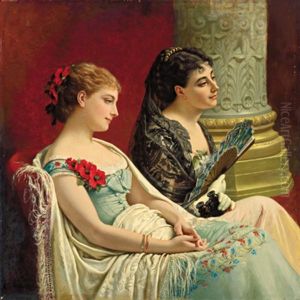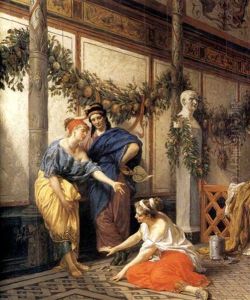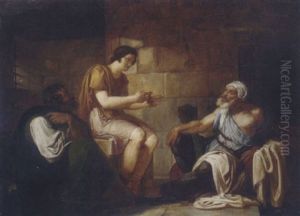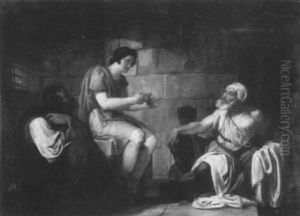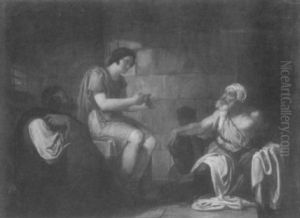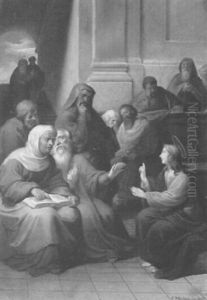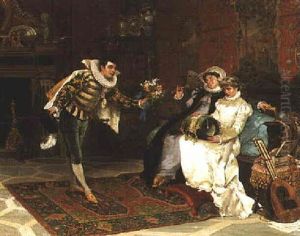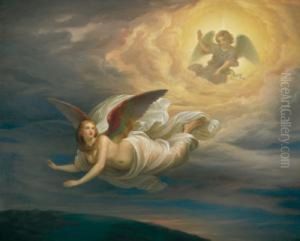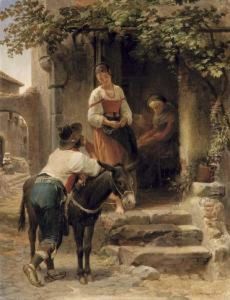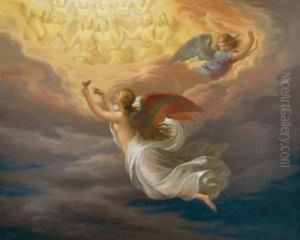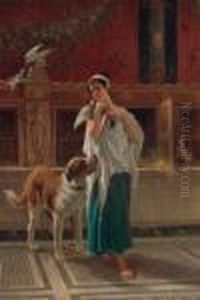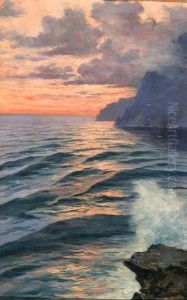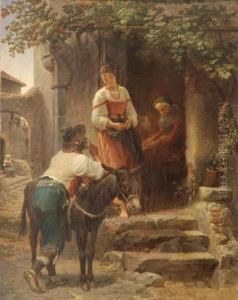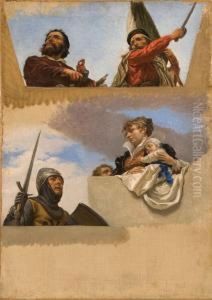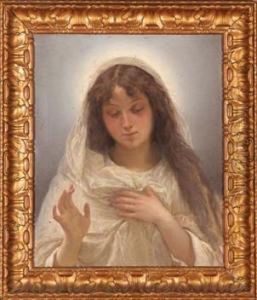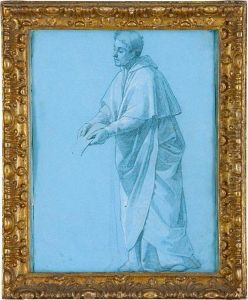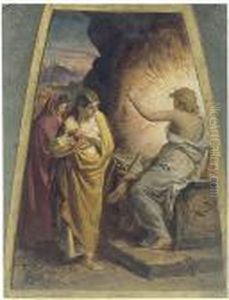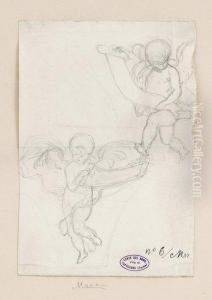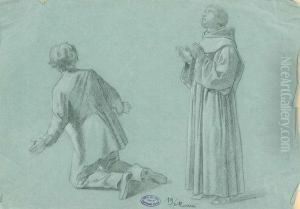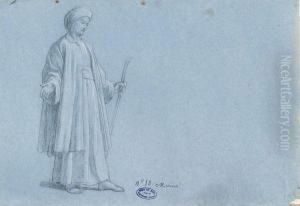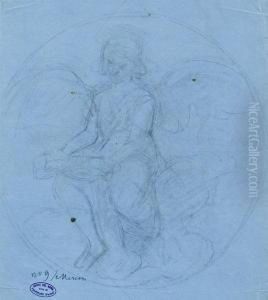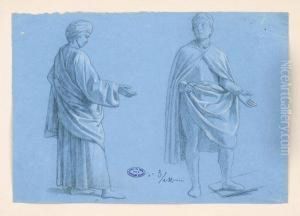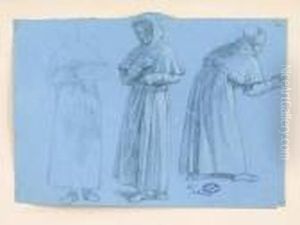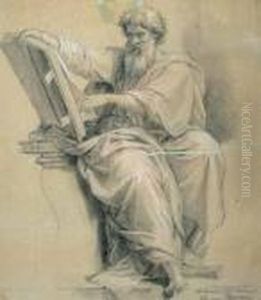Cesare Mariani Paintings
Cesare Mariani was an Italian painter and architect, born on May 12, 1826, in Rome, then part of the Papal States. He was known for his contributions to religious and historical painting, as well as for his architectural works. Mariani's artistic journey began under the guidance of his father, who was a decorative painter. This early exposure to art and decoration had a significant influence on his development as an artist.
Mariani furthered his artistic education at the Accademia di San Luca in Rome, where he studied under the Neoclassical painter Vincenzo Camuccini. His education and training allowed him to cultivate a style that blended traditional Neoclassical elements with the emerging Romantic sensibilities of the time. Mariani's works often featured dramatic lighting, rich coloration, and expressive figures, characteristics that aligned him with the Romantic movement while maintaining a strong foundation in classical art traditions.
Throughout his career, Mariani received numerous commissions for religious paintings, frescoes, and altarpieces, primarily for Roman churches and other religious institutions. Among his notable works are the frescoes in the church of Santa Maria sopra Minerva and in the Basilica di San Lorenzo fuori le Mura in Rome. His dedication to religious themes was partially a reflection of the cultural milieu of the Papal States, where the Catholic Church was a dominant patron of the arts.
In addition to his painting, Cesare Mariani made significant contributions to architecture. He was involved in the restoration of medieval churches as well as the design of new buildings. His architectural works displayed a similar historicist approach, often incorporating elements of past styles into contemporary structures, which was a hallmark of the 19th-century architectural revival movements.
Mariani's influence extended beyond his own creations; he was also a respected teacher. He served as the director of the Accademia di San Luca, the very institution where he had once been a student. In this role, he mentored a new generation of artists, helping to perpetuate the classical traditions of Italian art while also encouraging innovation and adaptation to new artistic trends.
Cesare Mariani died on September 8, 1901, in Rome. His legacy is preserved in the numerous works he left behind, which continue to be appreciated for their technical mastery and emotional depth. Mariani's contributions to both painting and architecture have secured him a place in the pantheon of 19th-century Italian artists.
